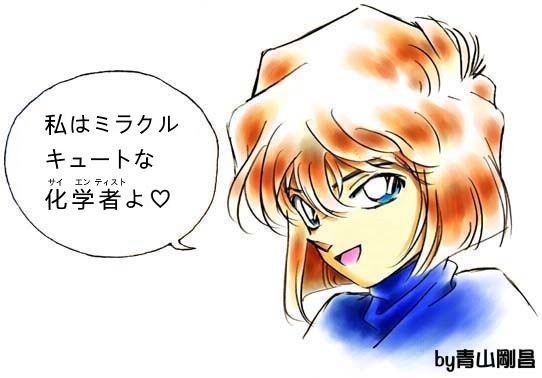liuyujie0136's Website

A website for self learning, collecting and sharing.
ggplot2使用技巧
- ggplot2使用技巧
R Graphics Cookbook, 2nd edition
ggplot2高效实用指南 - 生信宝典
ggplot2实用教程精选 - YuLabSMU
Use R package export to export Rplots to PPT
export is an R package to easily export active R graphs and statistical output in publication quality to Microsoft Office, HTML, and Latex. More information on GitHub.
Get the latest development version from GitHub
install.packages("officer")
install.packages("rvg")
install.packages("openxlsx")
install.packages("ggplot2")
install.packages("flextable")
install.packages("xtable")
install.packages("rgl")
install.packages("stargazer")
install.packages("tikzDevice")
install.packages("xml2")
install.packages("broom")
install.packages("devtools")
devtools::install_github("tomwenseleers/export")
Getting Started
library(export)
?graph2ppt
?graph2doc
?graph2svg
?graph2png
?table2ppt
?table2tex
?table2excel
?table2doc
?table2html
## export of ggplot2 plot
library(ggplot2)
qplot(Sepal.Length, Petal.Length, data = iris, color = Species, size = Petal.Width, alpha = I(0.7))
# export to Powerpoint
graph2ppt()
graph2ppt(file="ggplot2_plot.pptx", aspectr=1.7)
# add 2nd slide with same graph 9 inches wide and A4 aspect ratio
graph2ppt(file="ggplot2_plot.pptx", width=9, aspectr=sqrt(2), append=TRUE)
# add 3rd slide with same graph with fixed width & height
graph2ppt(file="ggplot2_plot.pptx", width=6, height=5, append=TRUE)
# export to Word
graph2doc()
# export to bitmap or vector formats
graph2svg()
graph2png()
graph2tif()
graph2jpg()
## export of aov Anova output
fit=aov(yield ~ block + N * P + K, npk)
x=summary(fit)
# export to Powerpoint
table2ppt(x=x)
table2ppt(x=x,file="table_aov.pptx")
table2ppt(x=x,file="table_aov.pptx",digits=4,append=TRUE)
table2ppt(x=x,file="table_aov.pptx",digits=4,digitspvals=1,font="Times New Roman",pointsize=16,append=TRUE)
# export to Word
table2doc(x=x)
# export to Excel
table2excel(x=x, file = "table_aov.xlsx",digits=4,digitspvals=1,sheetName = "Anova_table", add.rownames = TRUE)
# export to Latex
table2tex(x=x)
# export to HTML
table2html(x=x)
An example Rscript
by liuyujie0136
## Export plots to PPT
# library package "export"
library(export)
# get system time for suitable file name
t=as.character(Sys.time())
t=gsub(" ","-",t)
t=gsub(":","-",t)
fname=paste0("Rplot-",t,".pptx")
# export plots
graph2ppt(file=fname)
对数据框的不同列循环作图
使用aes_string
library(ggplot2)
data <- data.frame(x = c(1, 2, 3),
y1 = c(1, 3, 4),
y2 = c(2, 5, 7),
y3 = c(5, 2, 9))
for (y in c("y1", "y2", "y3")) {
p <- ggplot(data = data, aes_string(x = "x", y = y)) +
geom_point()
print(p)
}
Use coord_cartesian instead of scale_y_continuous
Example:
ggplot(df, aes(x = Group, y = Count)) +
geom_boxplot(outlier.colour = NA) +
coord_cartesian(ylim = c(0, 100))
From the coord_cartesian documentation:
Setting limits on the coordinate system will zoom the plot (like you’re looking at it with a magnifying glass), and will not change the underlying data like setting limits on a scale (e.g. scale_y_continuous) will.
You can also use scale_y_continuous alongside coord_cartesian to modify breaks, minor_breaks and expand etc. Just don’t supply it with the ylim argument!
在散点图上添加线性拟合方程和R值
借用ggpubr包
library(ggplot2)
library(ggpubr)
set.seed(1234)
df <- data.frame(x = c(1:100))
df$y <- 2 + 3 * df$x + rnorm(100, sd = 40)
p1 <- ggplot(data = df,
mapping = aes(x = x,
y = y)) +
geom_point() +
geom_smooth(method = "lm") +
theme_classic() +
labs(x = "X",
y = "Y") +
theme(axis.title = element_text(size = 10)) +
stat_cor(label.y = 300,
aes(label = paste(..rr.label.., ..p.label.., sep = "~`,`~"))) +
stat_regline_equation(label.x = 5, label.y = 280)
ggsave("p1.pdf",
annotate_figure(p1, fig.lab = "(a)", fig.lab.size = 20),
height = 4,
width = 4)
ggplot2多子图对齐坐标轴
https://zhuanlan.zhihu.com/p/161401082
使用cowplot::plot_grid(align = "vh"),(align = "v":垂直方向上对齐,align = "h":水平方向上对齐)
例:plot_grid(p1, p2, p3, p4, ncol = 2, align = "vh")
另,可用于 ggplot2 子图排版的 package 有:
- gridExtra
- patchwork
- cowplot
ggplot2多子图合并图例
https://wilkelab.org/cowplot/articles/shared_legends.html
使用cowplot::get_legend()和cowplot::plot_grid(),示例如下:
library(ggplot2)
library(cowplot)
# plot something first ......
# arrange the three plots in a single row
prow <- plot_grid(
p1 + theme(legend.position="none"),
p2 + theme(legend.position="none"),
p3 + theme(legend.position="none"),
align = "vh",
labels = c("A", "B", "C"),
nrow = 1
)
# extract the legend from one of the plots
legend_a <- get_legend(
# create some space to the left of the legend
p1 + theme(legend.box.margin = margin(0, 0, 0, 12))
)
# add the legend to the row we made earlier. Give it one-third of the width of one plot (via rel_widths).
plot_grid(prow,
legend_a,
rel_widths = c(3, .4))
# extract a legend that is laid out horizontally
legend_b <- get_legend(
p1 +
guides(color = guide_legend(nrow = 1)) +
theme(legend.position = "bottom")
)
# add the legend underneath the row we made earlier. Give it 10% of the height of one plot (via rel_heights).
plot_grid(prow,
legend_b,
ncol = 1,
rel_heights = c(1, .1))
ggplot2绘制双y轴
https://www.zhihu.com/tardis/zm/art/451580927
使用scale_y_continuous(sec.axis = sec_axis(~./N, name=XXX, breaks=XXX))即可。其中N为两个y轴数据的换算倍数,~./N表示次级y轴的范围是用一级y轴除以N。
注意,次级y轴对应数据在绘制时需要乘以N。
若仅希望重复一遍y轴(即左右均有相同的y轴),则使用sec.axis = dup_axis(name=XXX, breaks=XXX ).
ggplot2设置坐标轴次级刻度(minor breaks)
https://www.jianshu.com/p/80835c4cc37f
在scale_(x|y)_continuous里设置minor_breaks:
minor_breaks=NULL:删除次要刻度标签minor_breaks=默认:两个主要刻度之间有一个次要刻度minor_breaks=手动设置的向量minor_breaks=函数:例如:scales::minor_breaks_n(n)(注意:此处n应该设置为所需次级刻度数目+2,因此n包含了其两端的两个主要刻度)